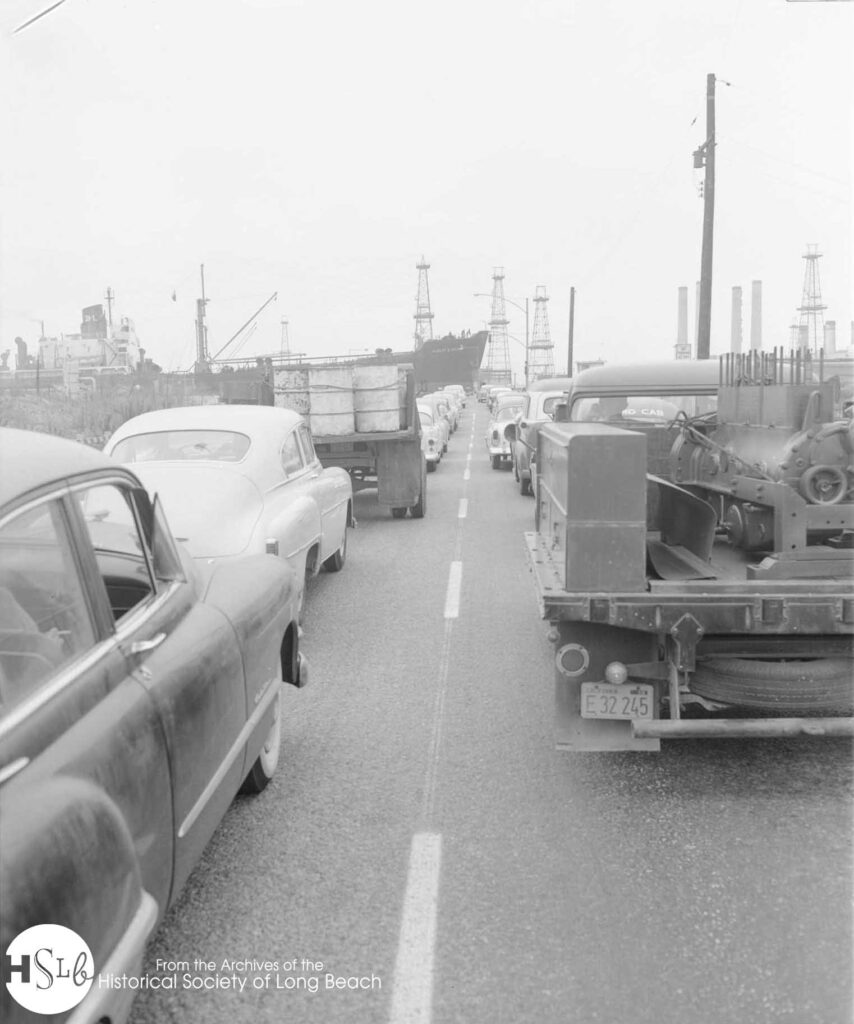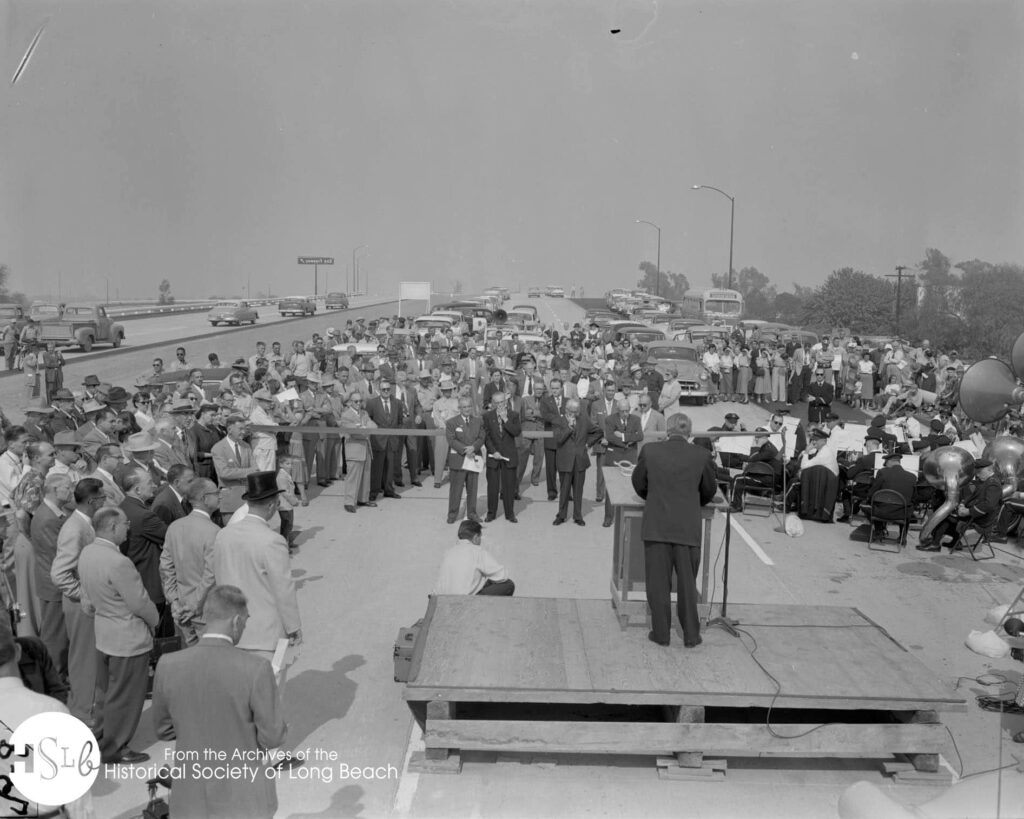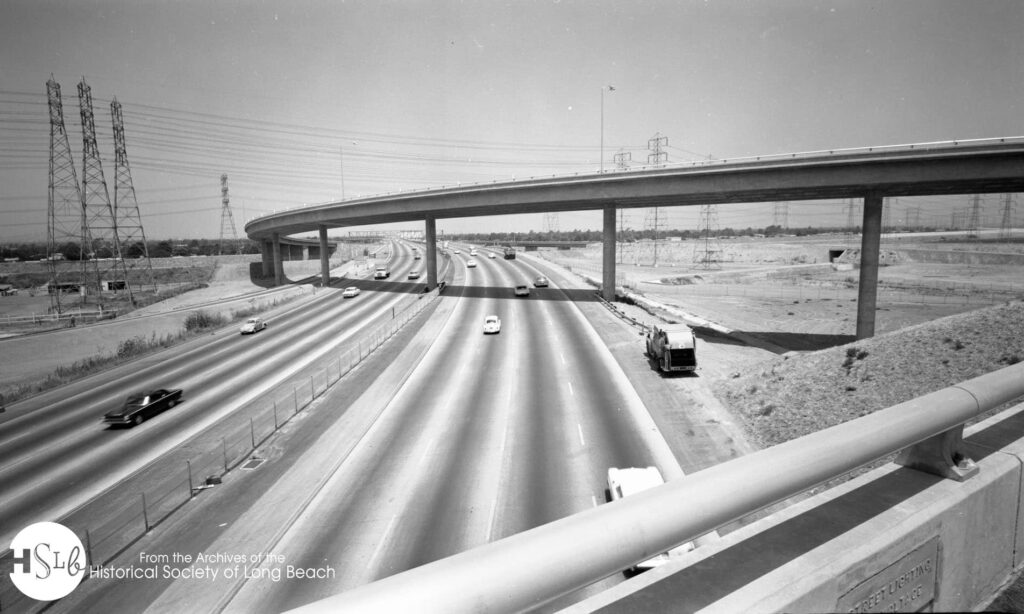By Craig Hendricks
The two decades following World War II witnessed profound changes in Long Beach. The quaint beach town, so attractive to visitors from midwestern states fleeing harsh winter weather, relied on its spectacular beach and family-friendly accommodations from the 1890s onward. However, several major events in the 1920s began the process of turning the city into a major industrial and financial center.
The U.S. Navy arrived in San Pedro bay, stationing warships in both Los Angeles and Long Beach harbors. Signal Hill and Long Beach became major centers of oil production as thousands of new wells produced huge profits for companies and significant royalty payments. Oil production and the Navy attracted new businesses to the harbor area, and the Port of Long Beach expanded its operations with new facilities, wharves and warehouses and transit sheds. Thousands of new jobs meant increased demand for housing, schools and recreational facilities. The city’s population soared past two hundred thousand souls as the 1940s dawned.

All of the above became the prologue to three decades of rapid expansion brought on by world war. The Pacific war demanded aircraft, ships, men, training facilities, and massive logistical support to maintain the fight against the Axis powers.
This demand cycle continued after 1945 as the Cold War blossomed, leading to armed conflict in Korea and increased global tensions. Long Beach and its port and harbor continued to play a significant role in supporting the enhanced position of the United States and its allies.
Locally, all of this economic activity and population growth created a sense that the city needed wider streets, more parks, and new neighborhoods for its growing population.
Local newspapers such as the Independent, the Press-Telegram and many neighborhood weeklies documented this growth through a talented cadre of photographers. One of them, Joseph Risinger, seems to have been everywhere in the 1950s and 1960s as Long Beach underwent major changes. He pointed his camera at this frenetic jumble of construction, grand openings, and ribbon-cutting events. Along with the speeches, the handshaking, and self-congratulatory messages of optimism for a golden future, there is just the smallest hint of unintended consequences.
Below are three examples of his work. Governor Goodwin Knight, just a year into his tenure as chief executive of California, holds forth at the partial opening of major new roadway, what will be known at the Los Angeles River Freeway, or “the 710.”
Ceremonial scissors at his elbow, the Governor leans forward, intense in his commemoration of this important event. Risinger places his camera at the Governor’s back and we get a view of a roadway still under construction, a small crowd of officials, and, just over the horizon, the gray, smoky skies of southern California, already in 1954 blanketed in the by-product of industrial growth, smog. How many in that crowd contemplated that the new roadway would effectively cut off the city’s western neighborhoods and harbor district?

In the other two photos, Risinger highlights the dilemma of post-war growth and prosperity. Cars wait patiently, or not so patiently, as one motorist steps out of his car to assess the delay in crossing one of the bridges that connect Terminal Island with the city. Traffic to work in the Long Beach Naval shipyard and associated industries often was stopped to allow ships to transit through the inner harbor and out to the bay in 1956.
A decade earlier city buses bringing workers to their jobs at the shipyard would have dominated this scene. Post-war prosperity, the revival of domestic automobile production, and good jobs meant that working families could afford to buy a car. One result became delays on streets, bridges, and other roadways. This would lead to a boom in freeway building that continued into the late 1970s. Intentional or not, busses are missing from this casual workday shot. Risinger gives us a preview of coming attractions in traffic issues.
Joseph Risinger and his fellow photographers provide the viewer with a deep sense of change over time, of the city’s progress from one type of social organization to another. In thinking about the history of Long Beach, it is critical to understand where we have come from even as we step into an uncertain future.


